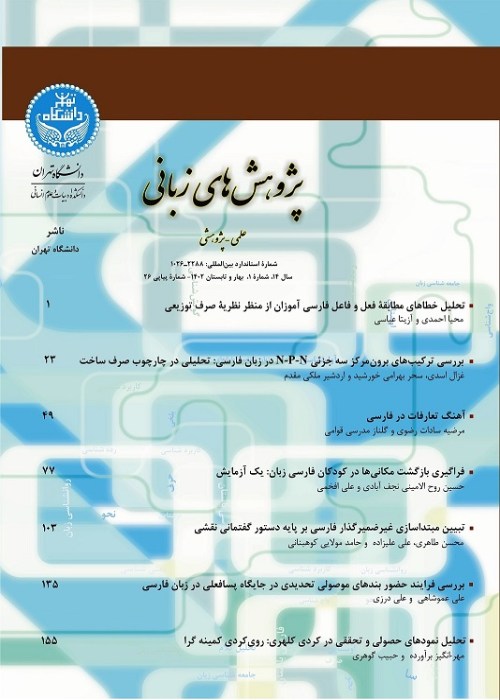Conceptual metaphor in a Khotanese text
Author(s):
Abstract:
Cognitive science has found out that languages typically make use of conceptual metaphors to concretize abstract meanings. Conceptual metaphor explains a target domain which is abstract via a source domain which is concrete. In other words، conceptual metaphor compares an abstract domain with a concrete one and thus makes it understandable for listeners/readers. This article studies the conceptual metaphors used in an ancient text in Khotanese language. Khotanese is an Eastern Middle Iranian language. The text is the 20th chapter of the book of Zambasta، which contains valuable Buddhist poems. The 20th chapter contains advices of Buddha to young monks. Buddha wishes to teach these monks his complicated teachings and thus he may have made use of various conceptual metaphors in order to concretize his teachings. This article primarily shows that Khotanese، like all other languages، has profited from conceptual metaphors. Also، this article attempts to render a better understanding of Buddha''s teachings explained in this chapter.
Keywords:
Language:
Persian
Published:
Language Research, Volume:4 Issue: 1, 2013
Pages:
111 to 127
magiran.com/p1216985
دانلود و مطالعه متن این مقاله با یکی از روشهای زیر امکان پذیر است:
اشتراک شخصی
با عضویت و پرداخت آنلاین حق اشتراک یکساله به مبلغ 1,390,000ريال میتوانید 70 عنوان مطلب دانلود کنید!
اشتراک سازمانی
به کتابخانه دانشگاه یا محل کار خود پیشنهاد کنید تا اشتراک سازمانی این پایگاه را برای دسترسی نامحدود همه کاربران به متن مطالب تهیه نمایند!
توجه!
- حق عضویت دریافتی صرف حمایت از نشریات عضو و نگهداری، تکمیل و توسعه مگیران میشود.
- پرداخت حق اشتراک و دانلود مقالات اجازه بازنشر آن در سایر رسانههای چاپی و دیجیتال را به کاربر نمیدهد.
In order to view content subscription is required
Personal subscription
Subscribe magiran.com for 70 € euros via PayPal and download 70 articles during a year.
Organization subscription
Please contact us to subscribe your university or library for unlimited access!


